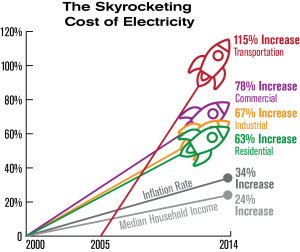Did you realize the energy in wind?
The overall capability of all wind generators globally has surpassed 840 gigawatts, that’s enough to cover greater than 7 % of the sector’s energy demand. In 2020, the parent became 742.
Small, single wind turbines can generate 100 kilowatts of electricity, sufficient to deliver a house with energy. Small windmills are also used for locations like water pumping stations. Slightly large wind turbines sit down on towers that might be up to eighty meters excessive and feature rotor blades that are approximately forty meters long Reliant Energy reviews . These generators can generate 1. Eight megawatts of strength. Once the electricity is generated, it may be used, connected to the grid, or saved for later use. The largest offshore wind farm within the international is referred to as Walney Extension. This wind farm is located in the Irish Sea about 19 kilometers (11 miles) west of the northwest coast of England. The Walney Extension covers a big vicinity of 149 square kilometers (fifty-six rectangular miles), making the wind farm large than the town of San Francisco in California or Manhattan Island in New York. The wind is a free, inexhaustible, and sustainable strength supply to be had almost everywhere in the international.

What about Bioenergy with bad effects on the surroundings?
Biomass is a natural cloth that comes from flowers and animals, e.G. Plants, wooden waste, and trees. When biomass is burned, the chemical power is released as warmth and might generate energy with a steam turbine. A main benefit of biomass is that it could be saved and used when needed. However, growing plants for biofuels requires massive quantities of land and pesticides. The land can be used for meals as opposed to biofuels. Some pesticides should pollute the air and water. Biomass strength also can be a non-renewable strength supply. Biomass power is based on biomass feedstocks – plants that are processed and burned to produce power. Biomass feedstocks can consist of plant life such as corn or soybeans in addition to wood. If human beings do now not replant the biomass feedstocks as fast as they eat them, biomass energy turns into a non-renewable energy supply. Biogenic waste and residues from agriculture, forestry, households, and industry are used to generate bioenergy. Bioenergy with wonderful and poor effects on the surroundings.
What about thermal energy?
The thermal strength saved in the earth’s crust is referred to as geothermal electricity and may be used for heating, cooling, and strong technology. However, most of the earth’s warmness stays underground and most effectively very, very slowly reaches the outdoors. We can use underground geothermal energy in some of the approaches. One manner to apply geothermal heat is “ground source warmness pumps”. This includes laying a water pipe among construction and holes dug deep in the ground. The water is heated by way of the geothermal energy underground and brings the warmth above the floor into the building. Geothermal warmth pumps can be used to warm houses, pavements, and even vehicle parks. Geothermal power is best available in sure elements of the sector. Another way to apply geothermal strength is to apply steam. In a few regions of the sector, there is underground steam that clearly rises to the surface. The steam can be piped without delay to a power plant. In different elements of the sector, but, the floor is dry.